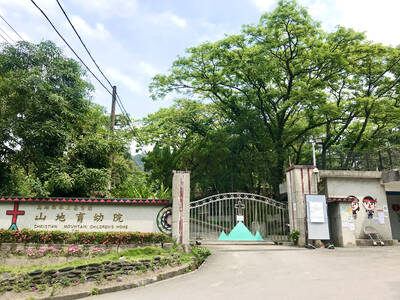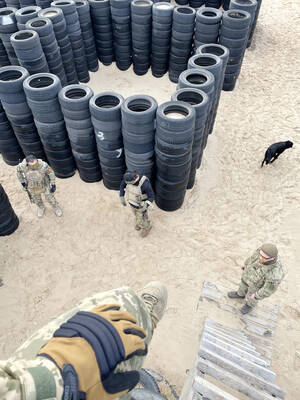In the early afternoon of April 29, 1950, a band of Tibetan border guards on the lookout for bandits bagged what they thought was a big prize. They had apprehended a group of five foreign-looking men shooting dead three of them and were bringing home two live prisoners.
The patting on the back stopped, though, when the guards returned to their base and were handed an urgent letter sent from the highest authorities in Lhasa ordering the safe passage of a group of five foreigners who were distinguished guests of the Dalai Lama himself.
Unwittingly the guards had killed the first CIA officer to die in the field. His name was Douglas Mackiernan and he was anxiously awaited by the Tibetan government for his anticipated help in organizing resistance against the impending Communist Chinese invasion.
The only things the guards could send to Lhasa were the two live prisoners and the heads of Mackiernan and the two other men they'd shot. They had severed the heads and stuffed them in saddle bags as prizes leaving the corpses to Tibet's vultures.
How Mackiernan came to meet this grisly fate is the subject of a fascinating new book by Nepal-based reporter and photographer Thomas Laird on the CIA's involvement at the onset of the Cold War in China's far northwest titled Into Tibet: The CIA's First Atomic Spy and His Secret Expedition to Lhasa.
The CIA's covert activity in Xinjiang and Tibet has remained one of the most protected of the agency's secrets and Laird has done a remarkable job of finding the survivors from that period and coaxing them into revealing as much as they are able or willing to recall. The result is a stunning tale of how the US and its allies in Inner Mongolia, Xinjiang and Tibet waged a quixotic last stand against the overwhelming tide of Mao's communist revolution.
Mackiernan was the CIA's man in Urumchi with a cover as vice-consul. Instead of the paper-pushing duties that his title would suggest, he was actually deeply involved in organizing a Kazak insurrection against the Russians, who had set up a puppet state called the East Turkestan Republic in the Altai Mountains, where the Russians were furiously trying to mine enough uranium to build the Soviet Union's first atomic bomb and crush the US atomic monopoly.
Throughout their cooperation, the CIA kept the Kazaks in the dark about the purpose of the mines, while bolstering Kazak hopes for US support in establishing an independent republic. Of course, the US was not about to get bogged down in a full-scale war in defense of the Kazaks. As soon as Russia detonated its first atomic bomb at about the same time the Chinese communist armies came sweeping into Xinjiang at the end of 1949, the US high-tailed it out of the area and Kazaks were murdered by the thousands for their resistance.
This pattern of half-hearted support and eventual abandonment leading to catastrophe for the indigenous people was soon to repeat itself in Tibet, Southeast Asia and other places where the CIA got its hands dirty.
Laird argues that Mackiernan was not a blind supporter of his agency's methods and insinuates that he may have contemplated suicide over the disastrous abandonment of the Kazaks. But he was nevertheless a faithful Cold Warrior and carried out crucial work by setting up high-sensitivity underground microphones near the border -- and possibly even inside the Soviet Union -- that pinpointed the location and size of the communist's first atomic blast in August, 1949.
As evidence of that explosion was being analyzed in the US, communist forces were closing fast on Xinjiang forcing Mackiernan to shut the US consulate in Urumchi and flee south across the Taklamakan Desert. The rest of the staff had fled earlier across the same desert into India. His orders, however, were to move into Tibet. Before leaving he was joined by a Fulbright scholar on the run from Inner Mongolia named Frank Bessac, who may have been a contract CIA agent, though the man denies this even today.
That winter, while Mackiernan's party waited on the edge of Tibet for mountain passes to clear, Washington was paralyzed by the McCarthy inquisition, leading possibly to the fateful delay in notifying Tibetan authorities of the group's arrival. Laird suggests that bureaucrats sitting on their hands back in Washington are largely to blame for Mackiernan's death. If this were the case, the government is not about to make an admission of guilt. Even today, the CIA won't acknowledge the identity of its first agent killed in action.
Because the CIA is so tight-lipped about Mackiernan's identity and activity -- presumably to avoid ruffling China's feathers -- Into Tibet leads one to assume that we are only getting a small part of what is certainly a gripping story. Even Bessac, who eventually made it to Lhasa, met the Dalai Lama and encouraged the Tibetan government to formally appeal for covert aid from the US is adamant he wasn't working as a spy.
Despite the many unanswered questions, what is made clear in Into Tibet is that the CIA carried out daring and valuable work in northwest China and that the agency was present and active in organizing Tibetan opposition to the communist Chinese invasion. What remains a tragic unconfirmed possibility is that the CIA may have inadvertently hastened the invasion by sending Mackiernan to Tibet after the communists had already pegged him as a spy.
Laird does an impressive job uncovering the details of Mackiernan and Bessac's activities to bring out a story reminiscent of Peter Hopkirk's The Great Game, albeit much more modest in scope and scale. Into Tibet has all the makings of a spy page-turner: idealistic and dashing secret agents (apparently Mackiernan was popular with the women), oppressed people and uncaring governments. Except this story is not fiction and the ending is grossly ironic for everyone involved, especially for Mackiernan.
The author's light-weight polemics in support of Mongolian, Kazak and Tibetan independence would have been best left to an expert in a separate section of the book instead of interspersed through the narrative. At least a dozen punctuation and spelling errors in this book also detract from its rich content.
Into Tibet: The CIA's First Atomic Spy and His Secret Expedition to Lhasa
By Thomas Laird
364 pages
Grove Press

May 18 to May 24 Pastor Yang Hsu’s (楊煦) congregation was shocked upon seeing the land he chose to build his orphanage. It was surrounded by mountains on three sides, and the only way to access it was to cross a river by foot. The soil was poor due to runoff, and large rocks strewn across the plot prevented much from growing. In addition, there was no running water or electricity. But it was all Yang could afford. He and his Indigenous Atayal wife Lin Feng-ying (林鳳英) had already been caring for 24 orphans in their home, and they were in

On May 2, Chinese Nationalist Party (KMT) Chairman Eric Chu (朱立倫), at a meeting in support of Taipei city councilors at party headquarters, compared President William Lai (賴清德) to Hitler. Chu claimed that unlike any other democracy worldwide in history, no other leader was rooting out opposing parties like Lai and the Democratic Progressive Party (DPP). That his statements are wildly inaccurate was not the point. It was a rallying cry, not a history lesson. This was intentional to provoke the international diplomatic community into a response, which was promptly provided. Both the German and Israeli offices issued statements on Facebook

Even by the standards of Ukraine’s International Legion, which comprises volunteers from over 55 countries, Han has an unusual backstory. Born in Taichung, he grew up in Costa Rica — then one of Taiwan’s diplomatic allies — where a relative worked for the embassy. After attending an American international high school in San Jose, Costa Rica’s capital, Han — who prefers to use only his given name for OPSEC (operations security) reasons — moved to the US in his teens. He attended Penn State University before returning to Taiwan to work in the semiconductor industry in Kaohsiung, where he

President William Lai (賴清德) yesterday delivered an address marking the first anniversary of his presidency. In the speech, Lai affirmed Taiwan’s global role in technology, trade and security. He announced economic and national security initiatives, and emphasized democratic values and cross-party cooperation. The following is the full text of his speech: Yesterday, outside of Beida Elementary School in New Taipei City’s Sanxia District (三峽), there was a major traffic accident that, sadly, claimed several lives and resulted in multiple injuries. The Executive Yuan immediately formed a task force, and last night I personally visited the victims in hospital. Central government agencies and the